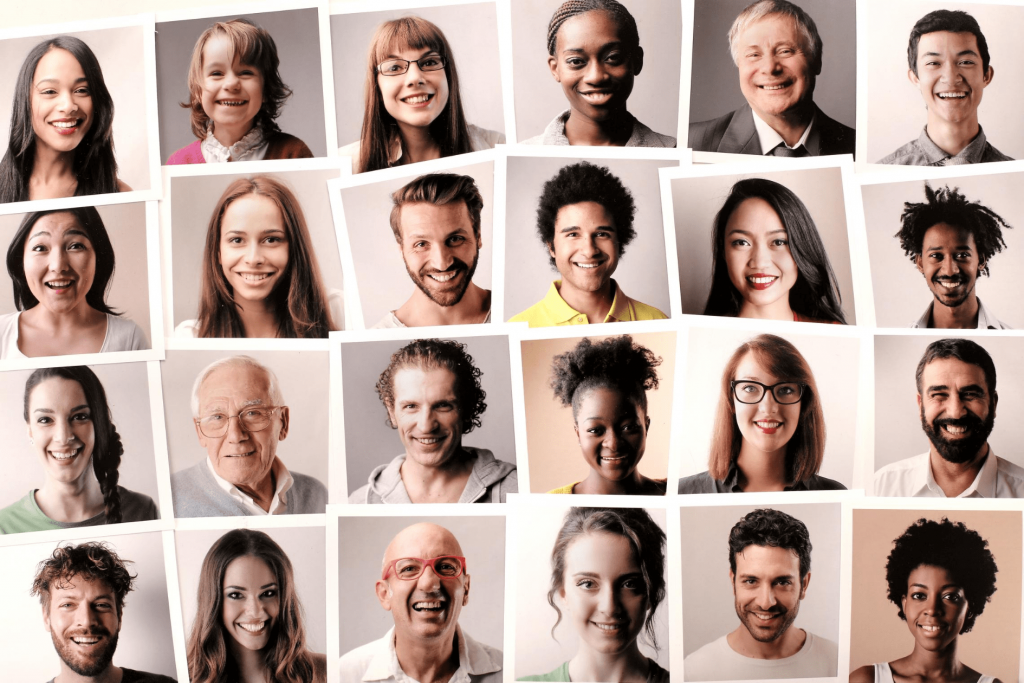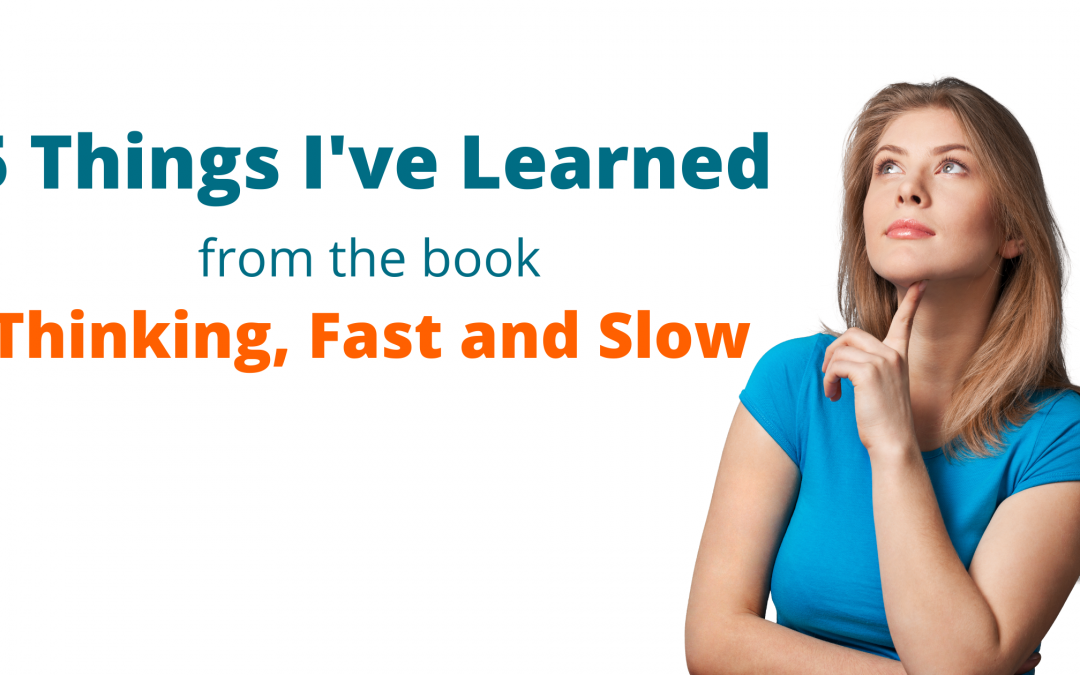I’ve been raving about this book to pretty much anyone who will listen to me for the past month. And I’m only half way done! Yet even as I haven’t quite reached the finish line, I’ve still learned a TON about humans and the way we make decisions. Which happens to mean I’ve learned a lot about myself, you, and everyone. If you’re feeling discouraged in the world about the antics on social media or the seemingly insane things people seem to believe, maybe this can give you a bit of insight into the craziness that is us. Plus, if you find this interesting I would highly suggest going out and reading the entire book Thinking, Fast and Slow by Daniel Kahneman to get a more in depth discussion on human decision making.
*All page references are to Thinking, Fast and Slow by Daniel Kahneman. Publication info at the bottom.
1. There are (generally speaking) two primary mechanisms humans have to make decisions.
System 1 operates automatically and quickly, with little or no effort and no sense of voluntary control.
System 2 allocates attention to the effortful mental activities that demand it, including complex computations. The operations of System 2 are often associated with the subjective experience of agency, choice, and concentration.
System 1
System 1 gets a bad rap for being the primary cause of implicit bias which can, in turn, create negative stereotypes of small/underrepresented groups of people. Yes, this is a huge drawback. But System 1 is also extremely important in order to function in this world. It helps us understand a situation more efficiently, therefore allowing us more time to react. This is especially important in life-saving situations. As an example, let’s say you are driving on the highway. Without consciously even being aware, you put more space in between you and another vehicle on the road than you normally would. Perhaps it is because they are swerving in their lane. Or maybe you caught a glimpse of them on their cell phone. In either case, System 1 created an automatic response in you to stay away from that vehicle. This required little or no conscious thought. The response may have mitigated risks to your life. Let’s take another example. Look at the pictures below:


You’re probably going to have a completely different response to the man than you would the woman. Not because you consciously thought, “His mouth is curved down and his eyes are narrowed. That must mean he is mad. If he is mad, I should …”. It was an instantaneous reaction. This instantaneous knowledge can help you better respond in the moment.
System 2
On the other hand we have System 2, the system that helps us logically think through pros and cons. This is the system that can put forth the true mental effort to solve complex problems. The example to kick your system 2 into gear is as follows. Compute in your head:
17 X 24
This probably took you more than 5 seconds (unless you’re some math wiz genius). FYI the answer is 408. System 2 is important in our day to day lives as well. Essentially, when presented with outside stimuli from the world, our System 1 interprets it quickly then offers up an explanation to our System 2. At this point, we either accept or reject System 1’s offering. Most of the time we tend to accept the System 1 information. In the case of learning a new skill our System 2 is highly engaged, helping us navigate the novel information presented to us.
2. System 1 is used way more often than we like to admit.

Most of us like to think we are rational creatures. We like to believe we are capable of purely rational thought. But this simply isn’t the case. Look at Sheldon from Big Bang Theory. He talks a big talk about being hyper rational, but in reality he is just as messily swayed by System 1 like the rest of us. System 1 is always working in the background and it is not a rational mechanism. This means that all of our decisions have the potential to be influenced by System 1, either helpfully or to our detriment (depending on the circumstances).
One study that blew my mind was on presenting 2 groups of college students with words. One group was shown words associated with old age. The other group was shown neutral words. Then, they told them to go down the hall to another room. Secretly, they timed how long it took for the students (on average) to walk down the hall. Students who read words associated with old age walked SLOWER than those who did not. Isn’t that crazy? The simple presentation of words had a measurable affect on our actions later. Mind. Blown. As soon as I read about that I started wondering what effects does this have for me at work? Or home? Or with my dog? Or friends? And then I spiraled into a rabbit hole thinking about marketing, advertising, political messaging and so forth. This isn’t new information and these industries are definitely taking advantage of how humans think. Just keep that in mind. Pg. 53

3. Hunger and fatigue makes our System 2 lazier than usual.

Ok, this may seem obvious. Everyone tends to be grumpier when they are tired or hungry. But the effects of a study involving 8 parole judges in Israel still surprised me. These judges spend entire days reviewing applications for parole. They are professionals, experts in their field. The default decision is denial and their approval rate is approximately 35%. As part of the study, they recorded exactly when they made a decision on each case in addition to the times of each of their lunch break. The authors of the study then recorded the proportion of approved requests against the time of the last food break. Guess what the results were? You probably guessed it. The number of approved requests was significantly higher (~65%) immediately after a food break. This means they were more actively engaging their System 2 to make analytical decisions after they had taken in food. After the initial burst of energy, they tended to adhere to the default denial decision, meaning System 2 was no longer putting forth as much effort. Pg. 43-44
4. When we are happy or content, our System 2 is lazier than usual.

This one seems just as intuitive as the previous one. It is natural that we let our guard down and reduce our “egoic monitoring” when we are in a calm and relaxed state. In general, System 2 is in charge of effortful thinking and problem solving. When we are in a good mood, or just more relaxed, our System 2 takes a backseat. This also means when we are frustrated, our System 2 is more engaged because it is actively trying to solve a problem. Therefore, furrowed brows and frowns can be a physical indicator to your System 2 that it needs to be more active. Whereas smiles and laughing tells it to take a break.
5. We as humans royally suck at guessing statistics intuitively…even professional statisticians.

As a mathy person I always liked to pride myself on being analytical and capable of intuitively grasping statistical information. THIS IS NOT TRUE. Of anyone. Even professional statisticians. Here is the study presented in the book. This is an activity where I highly recommend you get out a piece of paper and participate in.
Tom W is a graduate student at a university. Please rank the following fields of graduate specialization in order of the likelihood that Tom W is now a student in each of these fields. Use 1 for the most likely, 9 for the least likely.
- Business Administration
- Computer Science
- Engineering
- Humanities and Education
- Law
- Medicine
- Library Science
- Physical and Life Sciences
- Social Science and Social Work
Ok, now read the following personality sketch of Tom W written during Tom’s senior year in high school by a psychologist, on the basis of psychological tests of uncertain validity.
Tom W is of high intelligence, although lacking in true creativity. He has a need for order and clarity, and for neat and tidy systems in which every detail finds its appropriate place. His writing is rather dull and mechanical, occasionally enlivened by somewhat corny puns and flashes of imagination of the sci-fi type. He has a strong drive for competence. He seems to have little sympathy for other people, and does not enjoy interacting with others. Self-centered, he nonetheless has a deep moral sense.
Pg. 147 – 149
Now rank the provided specializations again in order of the likelihood that Tom W is now a student in each of these fields. Use 1 for the most likely, 9 for the least likely.

Were there differences between your two different rankings? Probably. I know there was when I first tried the exercise. But is this truly a valid way of thinking? Turns out it isn’t. We were told specifically that the psychological tests had “uncertain validity” meaning they couldn’t be trusted. This means the entire description of Tom W can’t be considered reliable. Any traits we associate with a stereotype of a profession aren’t actually relevant. Therefore the first and second list statistically should be the same. On top of that, even if the description had been reliable, it still statistically wouldn’t have impacted the answer to the question. The fact is, since more students are enrolled in “Business Administration” than “Computer Science” it is still more likely Tom W is a Business Administration student despite the stereotypical associations to the “Computer Science” profession.
I consider myself a laymen, not an expert, in statistical thinking. I did not fault myself for falling into this logical fallacy. But it surprised me that PROFESSIONAL statisticians made the same mistakes! This kind of thinking is, after all, their profession. But that is just how the human mind works.
We aren’t stupid, we’re just human.

We are associative machines. We form associations (whether or not truly statistically accurate) based on our life experiences. And these associations help us make quick decisions in our daily lives. This is a huge boon for helping us navigate the world around us. If System 2 were to be actively engaged 100% of the time we as a race of beings would never get anything done! Not only that we would be a pretty miserable lot. That doesn’t sound like the life I want to live.
So I am grateful for both systems. And I’m also grateful to know a little bit more about myself. This way, when the decision is high stakes (like buying a house or hiring someone) I can recognize that System 1 may influence my decisions unnecessarily. I can create systems and processes to mitigate the potential unfair judgements that my System 1 automatically generates based on my life experiences. And finally, I can ensure my System 2 is actively engaged when it is most important to have clear and analytical thinking. I hope you found this just as fascinating as I did and encourage you to read the book in its entirety! I’m only halfway done, so there is still plenty to learn!

